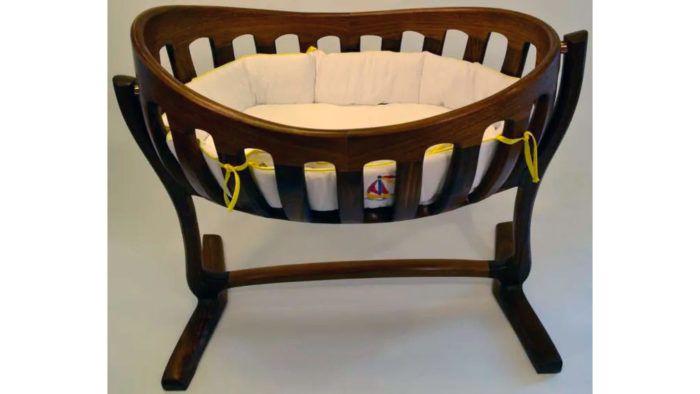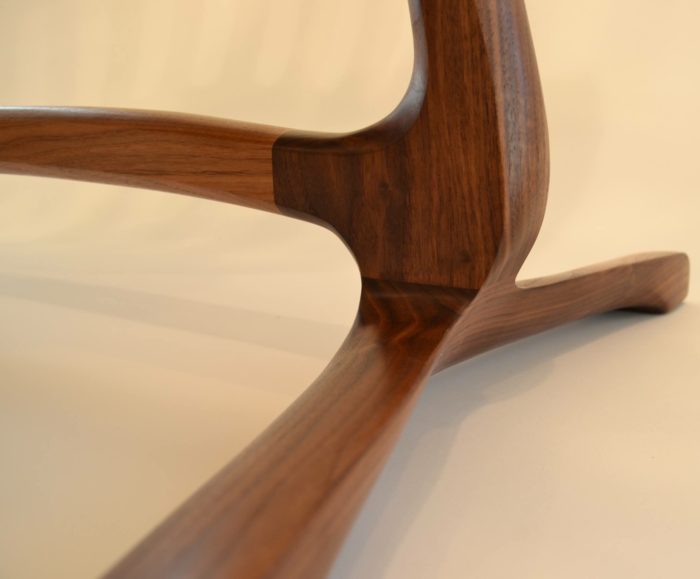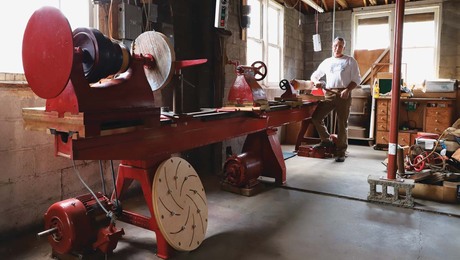From the Bench: The cabinetmaker
Sometimes, life has a way of taking us back to our beginnings by going full circle.
One of my earliest childhood memories was getting up before daylight in the rural community of Macedonia, S.C., and crossing the road to sit with my grandfather on his porch while drinking coffee. I was around 4 years old at the time, but I still have vivid memories of this daily occurrence. My grandfather and I would sit and sip until daybreak. Then he would say, “Son, I’ve got to get started.” My grandfather was a well-known cabinetmaker, who had the reputation of being the best of the best in our area. Often times, I would tag along and watch him pull his tablesaw out of his tiny shop and start his day building cabinets.
Before the days of carbide sawblades, he would sharpen his own blades using a small red blade vise, adjusting the set of each tooth with a saw set. It was during this time I first realized I wanted to be a cabinetmaker when I grew up. Cabinetmaking was my first love, and my grandfather was unknowingly influential in this early decision. After my grandfather passed away in 1972, the inherited gift for building things flourished within my dad, and he became known as the next generation cabinetmaker in our family. I remember so well the hope chests, gun cabinets, tables, and cabinetry my dad built during these years.
By the time high school graduation came, I was determined to go my own way, so I enrolled in a welding school. I soon found myself working all over the southeastern United States as a pipe welder. From time to time, my cabinetmaker roots would resurface, such as when I needed a small shelf or cabinet. As the years passed, I broadened my mechanical background with a degree in Mechanical Engineering and then a master’s degree in Business. Because I was working full time while attending school, cabinetmaking slowly diminished from my life.
At 48 years old, I came home from work to find an old painted cradle on the porch of our home, which I did not recognize. When I asked about the cradle, my wife explained that it was the cradle her grandmother gave her when she was expecting our oldest daughter. Now our daughter was expecting, and my wife wanted me to strip the paint and return the cradle to its original condition so we could give it to our daughter to use. I disassembled the cradle on the back porch, removed the paint, gave the hardware a facelift, reassembled it, and installed several coats of urethane. My wife was pleased with the final product. But this cradle was for our daughter and we needed one for our home, too.
 There was only one solution to this problem; I had to build our granddaughter’s cradle for our home. At this point in my life, my cabinetmaking roots of years ago resurfaced. Then, four years later, our youngest daughter announced she would give birth to our grandson. At her discretion, I built a Scott Morrison inspired cradle for our grandson in my 1,440-square-foot shop. This cradle proved to be my most challenging and rewarding build to date.
There was only one solution to this problem; I had to build our granddaughter’s cradle for our home. At this point in my life, my cabinetmaking roots of years ago resurfaced. Then, four years later, our youngest daughter announced she would give birth to our grandson. At her discretion, I built a Scott Morrison inspired cradle for our grandson in my 1,440-square-foot shop. This cradle proved to be my most challenging and rewarding build to date.
Sometimes, life has a way of taking us back to our beginnings by going full circle. Now that I am retired, I plan to fully submerge myself in my first love, and carry on the family heritage as a third-generation cabinetmaker.
Steve Gaskins is a Professional Mechanical Engineer who makes custom furniture in Macedonia, S.C.




















Comments
Hi Steve
Beautiful cradle, showing your heritage comming through !
I am impressed with your talent and craftsmanship, and
I have admired your work since I first saw it some years ago.
Some questions have been puzzeling me.
First the swivel joint. I suppose there is one pipe inside another, glued to cradle and stand, respectively. How long did you make the inner pipe to make it safe from falling/breaking apart, and how did you manage to assemble it?
What is the thickness of the laminates for the top rail?
And last, did you resaw the curves of the slats, then glueing them, flat sides together, like Maloof’s rocker head rest trick?
Kind regards,
Ole
Norway
Is there a plan for this? I'm not quite creative enough to just look at it and build it. I have no grandkids yet but my children are quickly approaching that time of their lives and I'd like to build one(or two...or three...)
Ole,
The swivel joint consists of a steel pin, 9/16" in diameter, which goes into a bronze bushing, 1-1/8" O.D. There is a pin on the stand side and a pin on the basket side which are stationary. The stand has a 1-1/8" diameter recess which will allow the bushing to slide back on the pin on the stand, away from the basket, so the basket can be lowered until the pins align. Then the bushing will slide onto the pin of the basket and go into a swallow recess on the basket. The bronze bushing is then locked with a set screw to the pin on the stand from the under side of the bushing. When the basket swings, you cannot see the pins and the bushing remains stationary, as the basket pin swivels in the bushing.
The top rail laminates are 1/8" final thickness.
Yes, I used the Maloof head rest trick for the vertical slats.
Hope this helps.
Jawod,
I do not sell plans for this cradle at this time.
Steve,
Obviously your mechanical engeneering skils where useful as well.
I didn’t think of a set screw or a sliding bushing.
Thank you for very useful information!
I've done a fair amount of cabinet work but it would take a lot more than plans for me to build this cradle. Working with spherical shapes is a talent I have never been able to develop.
My hat is off to you Steve. That is a beautiful piece and will be treasured by the people it's passed down to.
Very Nice. I love the organic Curves. It feels like this was grown to perfection....
This is a beautiful piece and wonderful story but please be aware that the design of the cradle is now known to be dangerous to infants as it puts them at risk for suffocation. Just as crib bumpers are very dangerous as they afford no ventilation if an infants face were to press up against them, so too does the sides of this mattress pad.
Log in or create an account to post a comment.
Sign up Log in